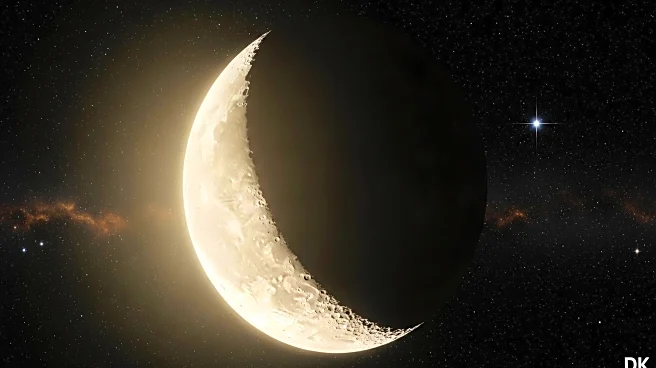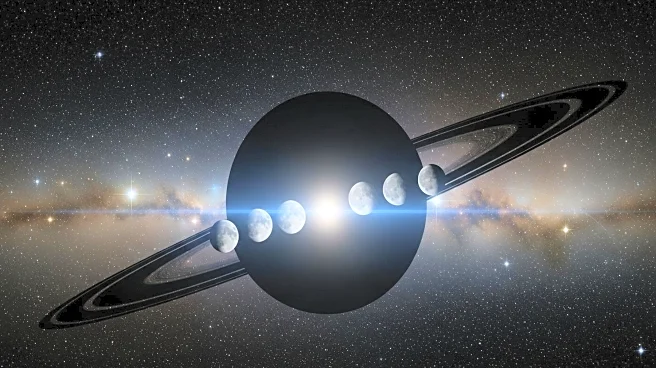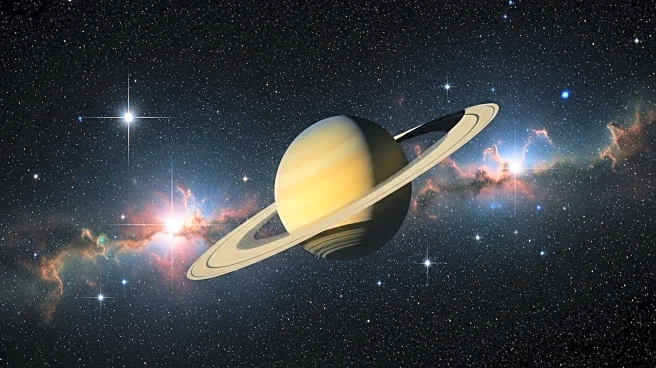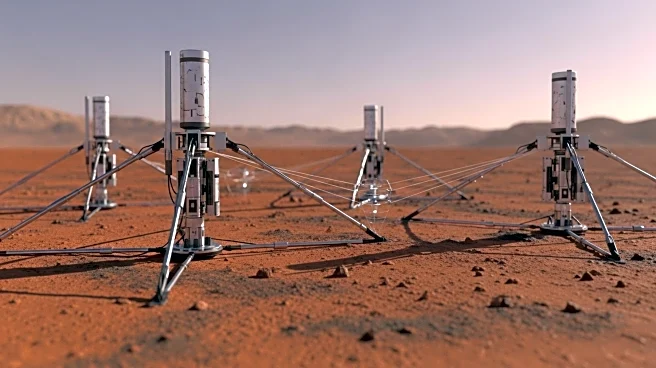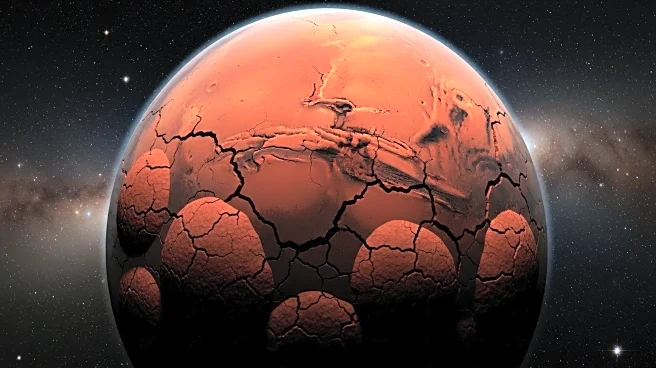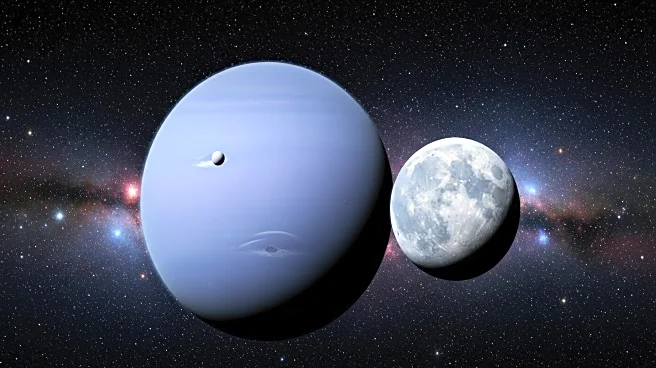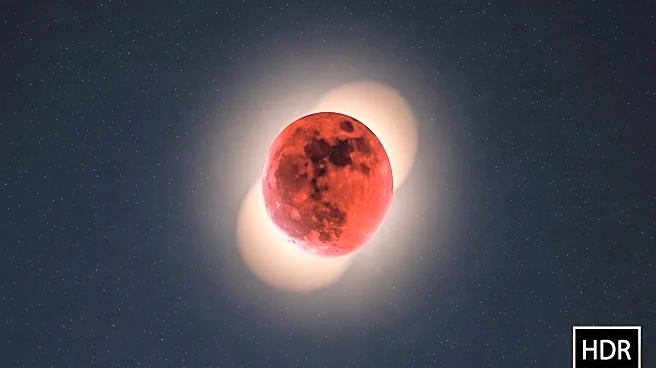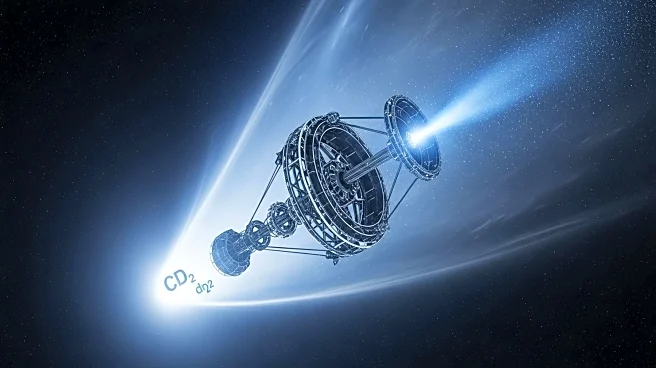What's Happening?
Saturn's moon Iapetus is currently at its greatest western elongation, positioned 9.5 arcminutes west of Saturn. This event provides a unique observational opportunity as Iapetus presents its brighter, icy hemisphere towards Earth, achieving a 10th magnitude brightness. Observers can view Iapetus along with other moons of Saturn, such as Titan, Tethys, Rhea, and Dione, during late evening or early morning hours. The moon's varying brightness is due to its two distinct hemispheres, one light and one dark, which rotate to face Earth at different times.
Why It's Important?
The observation of Iapetus at western elongation offers astronomers and enthusiasts a chance to study the moon's unique characteristics and its interaction with Saturn's gravitational forces. Understanding the dynamics of Saturn's moons contributes to broader knowledge of planetary systems and their formation. This event also highlights the importance of telescopic observation in uncovering details about celestial bodies, aiding in the development of astronomical techniques and technologies.
What's Next?
As Iapetus continues its orbit around Saturn, astronomers will monitor its brightness variations and orbital dynamics. Future observations may focus on the moon's surface composition and its interaction with Saturn's rings and other moons. These studies could lead to new insights into the processes governing moon formation and evolution in planetary systems.
Beyond the Headlines
The observation of Iapetus underscores the complexity and diversity of celestial bodies within our solar system. It invites further exploration into the unique features of moons and their roles in planetary systems. This event also serves as a reminder of the vastness of space and the ongoing quest to understand the universe.
